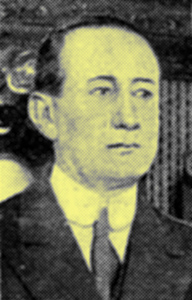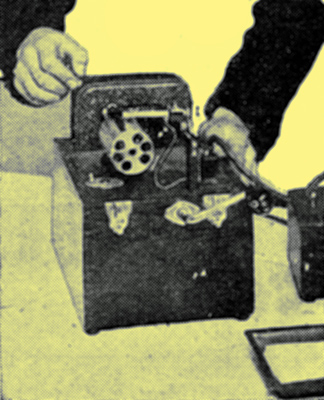|
During a lecture at the Patent Office Dr W H Eccles, FRS, emphasised the value of invention in the science of radio. We present a commentary by Sexton O'Connor.
In a recent lecture given at the Patent Office, with Mr Herbert Williamss, Parliamentary Secretary to the Board of Trade, in the chair, Dr W H Eccles, FRS, gave an interesting account of the outstanding inventions and discoveries from which modern Wireless science has been developed.
All wireless telegraphy, he said, is based upon the discovery made by Hertz, in 1888, of how to generate electric waves and detect their arrival at a distance. Crookes, in a famous article in 'The Fortnightly Review', wrote eloquently in 1892 of their possibilities. Oliver Lodge, in 1894, demonstrated at the British Association meeting in Oxford the first complete Wireless signalling system - a Hertzian oscillator for making electric waves, a coherer for receiving them at a distance of a hundred yards, and a Morse key and relay for handling the dots and dashes. None of this apparatus was patented.
The First Patents

The man who made radio a commercial practicability, and who has been responsible for many important developments. Senatore Marconi.
But, in 1896, Marconi filed a patent for Wireless transmission and reception, and in 1897, before Marconis patent was published, Lodge filed another patent embodying certain fundamental principles which still survive in every modern Wireless station. Marconis pioneer patent showed that only one-half of the theoretical Hertz oscillator rod or aerial need be used when arranged vertically. The other half is supplied by the electrical reflection which takes place on the surface of the earth.
Lodges first patent included, among other things, the introduction of tuning coils into transmitting and receiving aerials, and the use of high-frequency transformers, thus bringing 'tuned' wireless waves into the world. Before Lodges patent no one talked of using coils to adjust the wave-length of the transmitter, or of 'tuning' ones receiver to the incoming signal.
Dr Eccles then spoke in detail of other pioneer patents, such as the famous 'four sevens' patent of 1900, covering the use of coupled circuits, and the invention of the Poulsen arc which first made continuous-wave telegraphy - the ideal method - possible, at any rate, in moderate power.
The Triode Valve
He passed on to Fessendens discovery of the method of heterodyne reception, and of its later developments. This wonderfully sensitive system is employed in one form or other all over the world.
Speaking of the thermionic valve, and of the many inventions relating to its manufacture and use, Dr Eccles pointed out that one patent, covering De Forests introduction of the grid into the early Fleming type of valve, never came to fruition. In 1912, De Forest endeavoured to find business men in London willing to help him in exploiting the three-electrode valve.
A number of large and small firms were approached, but none of them saw any value in the invention. As a result of this disappointing response, De Forest, in 1912, failed to pay the first renewal fee. The patent accordingly lapsed, and became the property of the British public.
As the sales of triode valves, in this country alone, must have run into many millions since 1913- when its merits first came to be recognised - De Forest, in effect, threw away one of the most valuable inventions in the annals of patent history.
Tuning-Fork Control
The use of a tuning-fork or quartz crystal, in combination with a valve, for the mutual sustaining and linking together of electrical and mechanical oscillations, is another noteworthy invention. It is at present in use at the Rugby station in connection with the Empire chain of wireless stations.
The mechanical vibration of the fork or crystal, once started, produces an electrical current which is applied to the grid of the valve and magnified. This magnified current is turned back to the vibrator to keep the latter going. In return the mechanical vibrator imposes its own steady jog-trot on the electrical currents and produces well-timed, sustained oscillations.
The 'Discovery' of Short Waves
During the years 1922 and 1923 another remarkable fact was emerging into the realm of knowledge. It was of the nature of a pure discovery, and so could not be patented; but it will stand out in the history of radio-telegraphy as an instance of how such knowledge may turn out to be as valuable industrially as any patented invention.
This was the realisation that short waves (of 100 metres or less) could be transmitted over longer distances, in greater strength, than the long waves (several kilometres in length) previously used. In July, 1924, the British Government ordered a number of short-wave reflector stations - now called Beam stations - for direct communication with the Dominions.
In conclusion, Dr Eccles said it seemed to him that the early inventions had the best chance of immortality; those coming later naturally tend to concern themselves more and more with detail improvements. Sometimes, however, a minor or detail improvement will reap the greater financial reward.

One of the latest developments in radio is the Fultograph picture receiver.
|